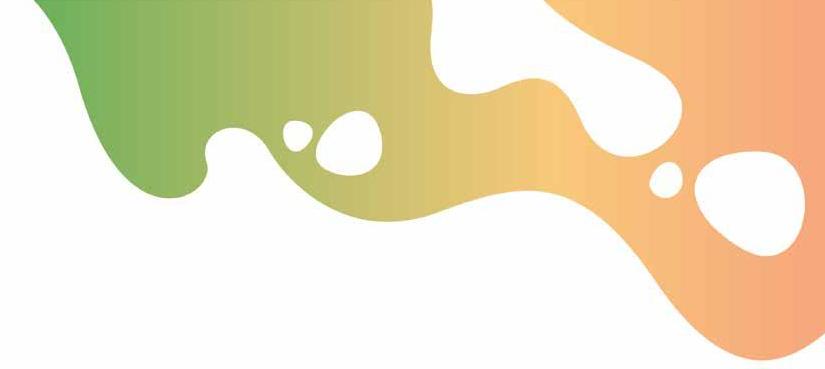
4 minute read
3 Tips to Recharge When Your Tank Is Running on Empty
Donald Altman, MA, LPC
The stress of the holidays is past, and just when you think you can breathe a sigh of relief, along comes the start of tax and audit season. Let’s not forget that the uncertainty around the pandemic and worries about the recovery of the economy are still with us. Well, here’s the dirty truth that no-one told you: Change and transition drive anxiety, stress and burnout. Plus, you’re probably coping with more stress than ever before.
If you’re feeling like you don’t have the energy reserves, that you are on edge, upset, anxious, angry, sad, depressed, or feeling disengaged from work and others, you are not alone. These are normal reactions to feelings of overwork and uncertainty. What can you do to reverse this harmful trend, both personally and in your workplace? Fortunately, there are some proven ways to help you recover and recharge from stress.
3-Steps to Recharging and Reinvigorating
Step 1: Change Your Perception of Stress
As many stress researchers have learned, it’s not stress that kills you, but your perception of stress. In other words, it’s how you think about stress that makes all the difference! When faced with a stressful situation or problem, think about the following:
• How is your stress temporary, as opposed to permanent? Remember that even COVID-19 is a temporary problem that will improve as vaccines are implemented.
• Can you problem-solve a way to reduce and/or manage the stress? For example, take a different route home to avoid freeway traffic.
• Can you find a way to prevent or avoid potential stress? Reduce the number of transitions in your day, such as by making one trip to do three errands at once, instead of making three separate trips.
• Can you notice negative self-talk? After you’ve found the “can’t,” replace it with a statement consisting of positive self-talk that motivates you to move forward.
Step 2: Take a Two Minute Vacation with Guided Visualization

You might be surprised at how effective guided visualization is in producing a state of calm. This method is routinely used to help athletes perform at their best. Visualization exercises trigger your brain to react as if what you’re imagining is actually happening.
• Find a quiet place where you will not be disturbed for two minutes. Turn off your phone or other devices so you won’t be interrupted, and consider setting a timer for two minutes.
• Remember as vividly as you can an activity that energizes you and makes you feel good. You might picture yourself hiking in your favorite place, running, swimming, dancing, biking, sunning on the beach, or whatever activity makes you feel good, revitalized and energetic.
• Notice as many colors, sounds, sensations as possible.
Totally immerse yourself in the activity! Don’t be surprised if your heart rate and respiration increase, just as if you were actually performing the activity that you’re visualizing!
• At the end of the two minutes, take a nice, deep breath in as you stretch your arms high over your head. Exhale slowly as you lower your arms, feeling more refreshed after this two-minute vacation. Best of all, you can use this practice multiple times a day, as often as needed.

Step 3: Activate Your Body’s Relaxation System in Two Minutes
Believe it or not, your body has a built-in relaxation system that automatically reduces stress. It also lowers your blood pressure, pulse rate and respiration, as well as produces alpha brain waves for calm and clear thinking. A belly breath or diaphragmatic breathing, using the three different postures below, turns on this relaxation system.
Try each for two minutes (turn off your phone and set a timer) and see which is most natural for you, and helps the abdomen move with the breath. (For detailed illustrations and instructions on these postures, see my book, Simply Mindful.)
• Posture 1: Sitting or standing, clasp your hands behind your back. This will stretch the rib cage. Breathe slowly, and allow the abdomen to become soft so it expands as you breathe in.
• Posture 2: Raise your elbows outward as you place your hands on your lower rib cage. As you breathe in, notice the expansion of your abdominal area moving outwards, side to side.
• Posture 3: Raise your arms up and clasp your hands behind your head/neck. Breathe slowly as you allow the breath to go into the belly.
To find the most benefit, use these three tools each day to counter stress and burnout. You’ll be surprised at how they can shift your experience and help you feel more positive and happy each day.
Donald Altman, MA, LPC, is an international mindfulness expert, psychotherapist, and award-winning author of 15 books that have been translated into many languages worldwide. His newest book is Simply Mindful: A 7-Week Course and Personal Handbook for Mindful Living. You can contact Donald at www. mindfulpractices.com. Icons: © iStock/ Vectorios2016 Illustration: © iStock/ Aleksei_Derin










